Can dogs pee and poop in a litter box?
We all adore our four-legged pals, but let’s be real – having to take them out for bathroom breaks can sometimes be a real pain. So, here’s a thought that might blow your mind: what if dogs could actually use a litter box? Yup, you heard it right. This idea has been floating around for ages, leaving pet owners divided on its feasibility.
In this blog post, we’re diving deep into the nitty-gritty of training dogs to do their business in a litter box. We’ll weigh the pros and cons, and get down to the practicalities of this crazy concept. From saving time and hassle for city dwellers or those with limited mobility, to tackling the potential challenges of training and cleanliness, we’re exploring every angle.
So come join us as we separate fact from fiction and find out if teaching your pup to use a litter box is just wishful thinking or an actual game-changer for dog owners everywhere. Say goodbye to those never-ending outdoor potty trips – let’s see if your furry friend can make some serious bathroom magic happen indoors.
Can All Dogs Use a Litter Box?
Contents
- 1 Can All Dogs Use a Litter Box?
- 2 What Type of Litter Box Should I Use for My Dog?
- 3 Introducing Your Dog to the Litter Box
- 4 Positive Reinforcement and Consistency are Key for Successful Training
- 5 Different Types of Litter for Dogs
- 6 Cleaning the Litter Box Regularly
- 7 Troubleshooting Common Issues with Dog Litter Box Training
- 8 Professional Assistance May be Needed in Some Cases
- 9 Conclusion
Litter box training is commonly associated with cats, but have you ever wondered if dogs can use a litter box too? While not all dogs are suitable for litter box training, with the right approach and understanding of their behavior, some dogs can successfully adapt to this alternative elimination method. In this article, we will explore the factors to consider when determining if your dog can use a litter box and provide insights into effective training techniques.
Factors to Consider:
- Size: Size plays a crucial role in a dog’s ability to use a litter box comfortably. Smaller breeds such as Chihuahuas, Yorkshire Terriers, and French Bulldogs tend to have an easier time using a litter box due to their size. However, larger breeds may find it more challenging to fit into a standard-sized litter box.
- Age: Puppies require more training and supervision compared to adult dogs when it comes to using a litter box. It is essential to start training them at a young age when they are more receptive to learning new behaviors.
- Behavioral Preferences: Dogs typically prefer eliminating in open spaces rather than confined areas like a litter box. While some dogs may be able to use a litter box for urination, they may find it more challenging to defecate in the box due to their natural inclination for open spaces.
- Medical Conditions and Physical Limitations: Some dogs may have certain medical conditions or physical limitations that make it difficult or impossible for them to use a litter box. For these dogs, alternative elimination methods may be more appropriate.
Training Techniques:
- Consistency and Patience: Litter box training requires consistent reinforcement and patience. Begin by confining your dog to a small area of the house where accidents are less likely to occur. Gradually increase the size of the area as your dog becomes comfortable using the litter box.
- Positive Reinforcement: Use positive reinforcement techniques such as treats, praise, or clicker training to encourage your dog to use the litter box. Reward them immediately after they successfully eliminate in the box to reinforce the desired behavior.
- Proper Litter Selection: Experiment with different types of litter, such as clay-based, paper-based, or grass-based litters, to find what your dog prefers. Some dogs may have specific preferences when it comes to texture and scent.
- Hygiene and Maintenance: Regularly clean the litter box to maintain hygiene and prevent odors. Scoop out solid waste daily and replace the litter as needed. A clean litter box will encourage your dog to continue using it.
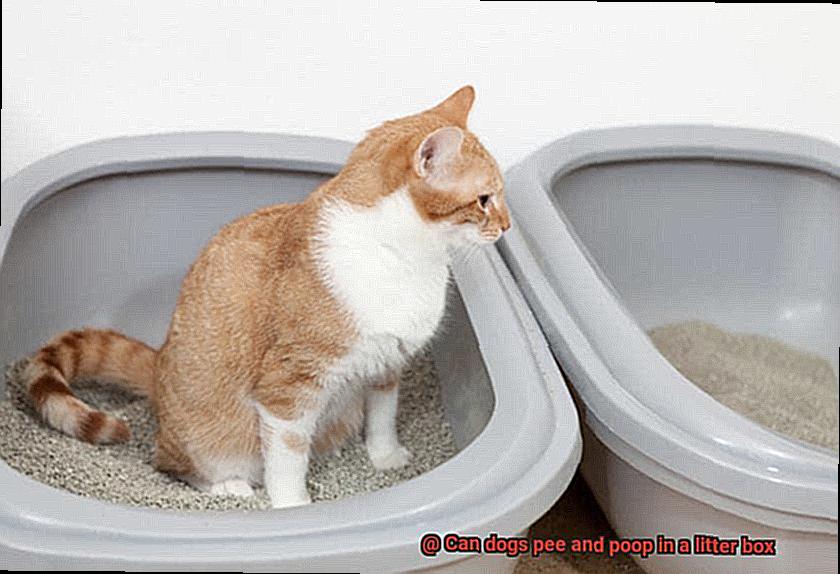
What Type of Litter Box Should I Use for My Dog?
French Bulldogs are adorable, compact, and lovable companions. However, when it comes to bathroom habits, they can be quite particular. Finding the right litter box for your French Bulldog is essential to ensure their comfort and hygiene. In this article, we’ll explore the different types of litter boxes available and help you make an informed decision based on your dog’s size, bathroom habits, and personal preferences.
Traditional Open Litter Box:
The traditional open litter box is a popular choice for many dog owners. These boxes are large and shallow, making it easy for French Bulldogs to step in and out. The open design allows for ventilation and easy access during cleaning. Look for a litter box that is spacious enough for your Frenchie to comfortably turn around in.
Covered Litter Box:
For French Bulldogs who prefer privacy during their bathroom time, a covered litter box may be the perfect solution. These boxes have a hood or cover that can be removed for easy cleaning. The cover helps contain odors and prevents litter from being scattered around the house, which can be a common occurrence with playful Frenchies.
Small Breed Litter Box:
French Bulldogs are small breeds, so consider choosing a litter box specifically designed for their size. These boxes are smaller in dimensions and may have lower sides to make it easier for your Frenchie to enter and exit comfortably. This type of litter box ensures a cozy and secure space for your furry friend.
Artificial Grass or Pee Pad Systems:
Some owners prefer using litter box systems that incorporate artificial grass or pee pads. These systems usually consist of a tray with a replaceable grass pad or absorbent material. They are convenient for indoor use and can be easily cleaned by replacing the pad or emptying the tray. This option mimics outdoor potty areas, which may appeal to French Bulldogs who are used to going outside.
Remember, when it comes to choosing a litter box for your French Bulldog, their comfort and preference should be the priority. It may take some trial and error to find the right type of litter box that works best for your Frenchie. Be patient and consistent with training, and always reward positive behavior.
Proper care and maintenance of the litter box are crucial for your French Bulldog’s health and hygiene. Scoop out solid waste daily, replace litter as needed, and clean the litter box regularly to keep it odor-free. Using dog-specific litters, such as those made from recycled materials or paper-based litters, can also help control odors effectively.
Introducing Your Dog to the Litter Box
Today, we’re going to tackle the topic of introducing your furry friend to the litter box. Now, I know what you’re thinking – “Litter box? But dogs are supposed to go outside.” Well, sometimes our little Frenchie pals need an indoor option, whether it’s due to bad weather or living in an apartment without a backyard. So, let’s dive right in and learn how to make this transition as smooth as possible.
First things first, let’s talk about picking the perfect litter box for your Frenchie. These adorable pups come in different shapes and sizes, so you want to choose a litter box that suits their needs. For smaller Frenchies, a shallow litter box with low sides would be paw-fect, while larger Frenchies might need a spacious litter box with higher sides. Make sure it’s easily accessible for them and placed in a quiet and cozy corner of your home.
Once you’ve got the right litter box, it’s time to familiarize your Frenchie with it. Let them explore the litter box at their own pace and sniff around to get comfortable. You can even sprinkle some treats or toys near the box to create positive associations. Remember, we want them to feel safe and happy using the litter box.
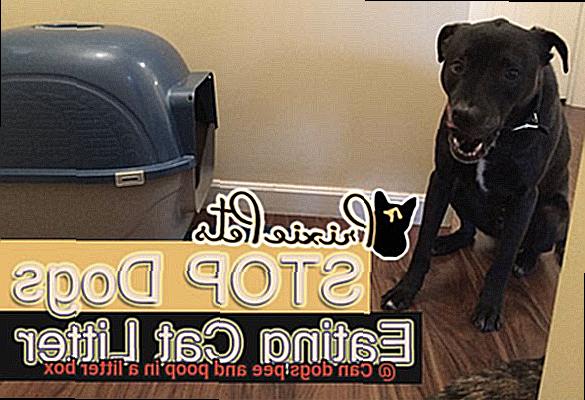
Now comes the fun part – associating positive experiences with the litter box. Every time your Frenchie shows interest in or approaches the litter box willingly, give them a treat, lots of verbal praise, or even play with their favorite toy. This positive reinforcement will help create a link between your Frenchie and the litter box.
Establishing a routine is crucial for your Frenchie’s success with using the litter box. Dogs thrive on routine, so make sure to take them to the litter box at regular intervals throughout the day – especially after meals, playtime, or waking up from a nap. This will help them understand that the litter box is their designated spot for doing their business.
To make the litter box even more enticing, consider using scent attractants made specifically for dogs. These attractants mimic the smell of urine or feces and can help draw your Frenchie’s attention to the litter box. A little sprinkle on the litter or around the box can work wonders in getting them interested.
If your Frenchie is used to doing their business outdoors, transitioning them to a litter box might take some time. Start by creating an outdoor potty spot with some litter and gradually increase the amount over time. This gradual transition will help your Frenchie feel more comfortable with using a fully enclosed litter box indoors.
Cleanliness is key when it comes to litter boxes. Dogs are naturally clean animals, and they prefer eliminating in a clean and odor-free environment. So, be sure to clean the litter box regularly, removing any waste promptly and replacing the litter as needed. This will keep the area clean and inviting for your Frenchie.
Positive Reinforcement and Consistency are Key for Successful Training
Training your French Bulldog to use a litter box can be a convenient solution for those times when going outside is not an option. However, achieving success in this training endeavor requires two essential elements: positive reinforcement and consistency. In this article, we will explore why these factors are crucial and provide practical tips to help you train your Frenchie to use a litter box effectively.
Positive Reinforcement: Rewarding the Right Behavior
- Use treats, verbal praise, or affection to reward your dog every time they successfully use the litter box.
- Associating positive outcomes with the desired behavior encourages your Frenchie to repeat it.
- Avoid punishment or scolding if accidents occur outside the litter box, as it can create fear and hinder progress.
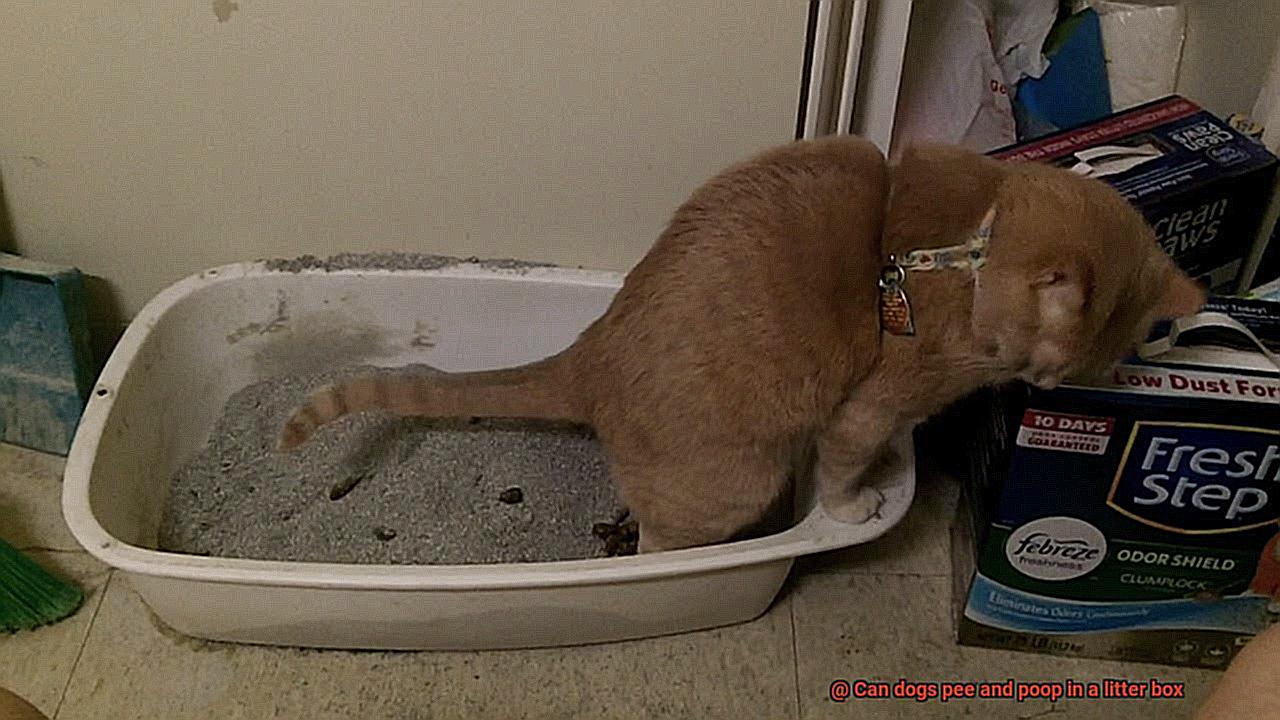
Consistency: Establishing a Clear Routine
- Place the litter box in a quiet and private area where your Frenchie feels comfortable.
- Introduce the litter box gradually, allowing your dog to explore it at their own pace.
- Immediately redirect your dog to the litter box if they show signs of using it incorrectly.
- Reward your Frenchie with praise and treats every time they use the litter box correctly.
Patience and Adaptability: Every Dog is Unique
- Be patient and understanding, as some dogs may learn quickly while others may take longer.
- Adapt the training approach to suit your Frenchie’s individual needs, preferences, and challenges.
- Maintain a positive attitude throughout the training process to keep your dog motivated and engaged.
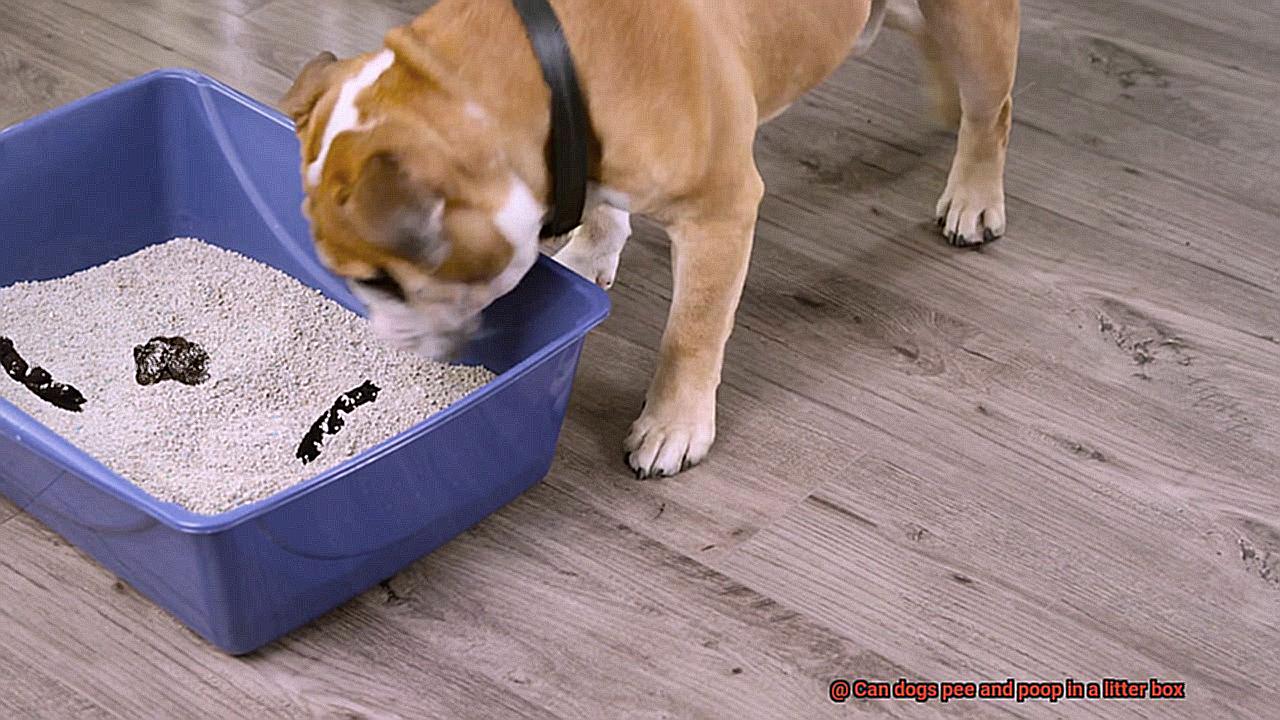
Maintaining Success: Gradual Reduction of Rewards
- Once your Frenchie becomes comfortable and consistent with using the litter box, gradually reduce the frequency of rewards.
- Continue to praise and reinforce good behavior to reinforce the positive association with the litter box.
Positive reinforcement and consistency are the keys to successful litter box training for your French Bulldog. By implementing these principles along with patience, adaptability, and a positive attitude, you can help your Frenchie become proficient in using the litter box.
Remember, each dog is unique, so be flexible in your approach and celebrate every step towards success.
Different Types of Litter for Dogs
French Bulldogs are adorable and lovable pets, but they can also be a bit messy when it comes to potty training. Luckily, there are several types of litter that can help make the process easier for both you and your furry friend. Let’s explore some different types of litter that are suitable for French Bulldogs.
Traditional Cat Litter:
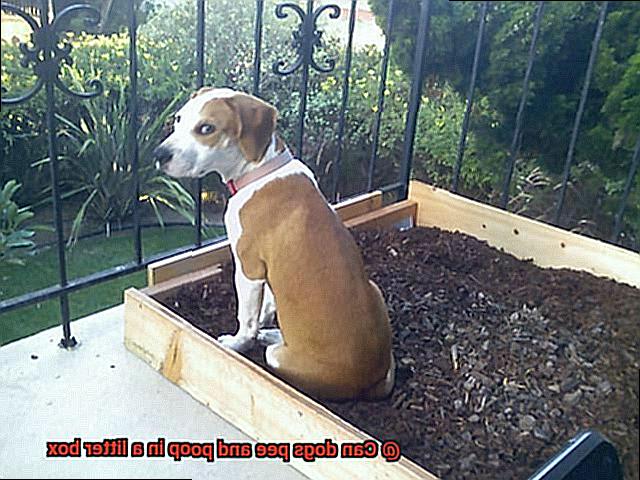
Traditional cat litter, made from clay or silica gel, can also be used for dogs. It is absorbent and helps control odor. However, it may not be the best option for French Bulldogs as they have sensitive paws and may find it uncomfortable to dig in.
Wood-based Litters:
Wood-based litters, such as pine or cedar shavings, are another option for French Bulldog litter. These litters are natural and biodegradable, making them an eco-friendly choice. They are also absorbent and help control odor. However, some French Bulldogs may be allergic to the scent of these litters, so it’s important to monitor their reactions.
Paper-based Litters:
Paper-based litters, made from recycled paper or newspaper pellets, are a popular choice for French Bulldog litter. They are highly absorbent and help control odor. They are also soft on a dog’s paws, making them more comfortable to dig in. However, they can be messy and may require more frequent cleaning.
Dog-specific Litters:
Some dog-specific litters are available on the market. These litters are designed specifically for dogs’ needs, taking into account their size and behavior. They may come in different textures, such as pellets or granules, and may have added features like odor control or antimicrobial properties.
When choosing a litter for your French Bulldog, consider their preferences and needs. Some French Bulldogs may have allergies or sensitivities to certain materials, so it’s always a good idea to test a small amount of litter before committing to a larger quantity. Additionally, consider the size of your French Bulldog and the size of the litter box when choosing the appropriate litter type.
Cleaning the Litter Box Regularly
Keeping your French Bulldog’s litter box clean is essential to their overall health and well-being. Regular cleaning not only ensures a clean and odor-free environment for your pup, but it also helps prevent the spread of bacteria and potential infections. Here are some important reasons why you should make regular litter box cleaning a priority:
Hygiene and Odor Control
Regularly cleaning your French Bulldog’s litter box helps maintain proper hygiene and prevents the buildup of waste material. Scooping the litter box daily removes solid waste and clumps of urine, preventing unpleasant odors from permeating your home. No one wants a stinky house.
Preventing Health Issues
A dirty litter box can become a breeding ground for bacteria, parasites, and infections that can harm your French Bulldog’s health. By regularly cleaning the litter box, you minimize the risk of your pup coming into contact with harmful pathogens.
Promoting Litter Box Acceptance
French Bulldogs, like any other dog breed, need a consistent and clean space to do their business. Regularly cleaning the litter box helps ensure that it remains an attractive and inviting option for your furry friend. A dirty litter box may discourage your French Bulldog from using it, resulting in accidents around your home.
Monitoring Your Dog’s Health
Cleaning the litter box provides an opportunity to monitor your French Bulldog’s bathroom habits and identify any changes in their waste consistency, frequency, or color. Any abnormalities could be indicative of an underlying health issue that requires attention from a veterinarian.
Now that you understand the importance of regularly cleaning your French Bulldog’s litter box, let’s move on to the steps involved in proper cleaning and maintenance.
Steps to Take When Cleaning Your French Bulldog’s Litter Box
Gather Your Supplies
Before you begin cleaning the litter box, gather all the necessary supplies. You will need gloves, a scooper, mild pet-safe cleaning products, warm soapy water, a scrub brush, a trash bag, and fresh litter.
Daily Scooping
Start by scooping the litter box daily to remove solid waste and clumps of urine. This will help maintain cleanliness and prevent odor buildup. Place the waste in a securely tied trash bag for disposal.
Complete Litter Change
Depending on your French Bulldog’s bathroom habits and the type of litter you use, complete litter changes should be done once a week or as needed. Start by emptying the old litter into a trash bag.
Cleaning the Litter Box
After emptying the old litter, it’s time to clean the litter box. Wear gloves to protect your hands from bacteria and use mild, pet-safe cleaning products. Avoid using harsh chemicals or strong-smelling cleaners that may deter your French Bulldog from using the litter box.
Troubleshooting Common Issues with Dog Litter Box Training
You’ve decided to litter box train your French Bulldog, but you’re encountering some bumps along the way. Don’t worry, you’re not alone. Many dog owners face common issues when it comes to litter box training. In this article, we’ll explore some of these issues and provide you with tips and tricks to troubleshoot them.
Resistance or Reluctance to Use the Litter Box
If your French Bulldog is hesitant or resistant to using the litter box, it’s essential to introduce it gradually and positively. Start by placing the litter box in a quiet and easily accessible area. Use treats and praise to encourage your dog to explore and use the litter box. You can also try placing their favorite toy or blanket near the litter box to create a positive association.
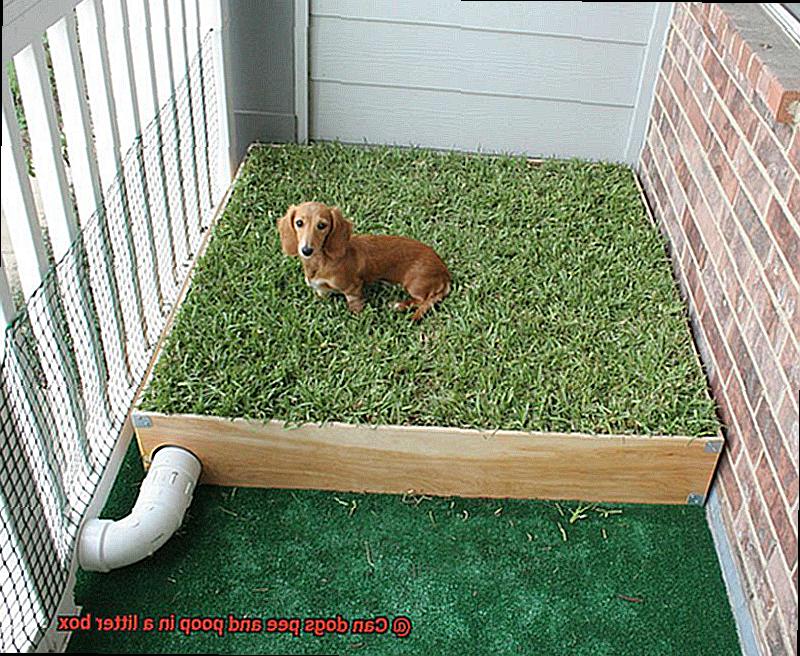
Accidents Outside of the Litter Box
Accidents outside of the litter box can occur if it’s not placed properly or if your dog doesn’t have enough opportunities to relieve themselves. Ensure that the litter box is visible and easily accessible for your French Bulldog. Consider having multiple litter boxes in different areas of your home, especially if you have a larger dog or multiple floors.
Difficulty Distinguishing Between Litter Box and Similar Objects
Some dogs may have trouble distinguishing between the litter box and other objects, such as rugs or carpets. To address this issue, use a specific type of litter with a distinct texture or scent. This will help your French Bulldog associate the litter box with the appropriate place to eliminate. Experiment with different types of litter until you find one that works best for your dog.
Using Litter Box for Only One Type of Elimination
If your French Bulldog only uses the litter box for urinating or defecating, try using different types of litter in separate areas of the box. Alternatively, you can provide multiple litter boxes with different types of litter. This will help your dog understand that both types of elimination are acceptable in the litter box.
Aversions to Certain Types of Litter or Litter Box Materials
Some dogs may develop aversions to certain types of litter or litter box materials. If this happens, experiment with different options. Try different types of litter or even alternative materials like grass or artificial turf. Finding the right fit for your French Bulldog’s preferences is key to successful litter box training.
Remember, troubleshooting common issues with dog litter box training requires patience, consistency, and a willingness to adapt. Each dog is unique and may require individualized approaches. With time and effort, you can successfully train your French Bulldog to use the litter box for both urination and defecation.
Professional Assistance May be Needed in Some Cases
Teaching a French bulldog to use a litter box can be a challenging task, and in some cases, professional assistance may be needed to ensure success. Here are some reasons why seeking help from a professional trainer or behaviorist can be beneficial:
- Breed-specific challenges: French bulldogs, like other breeds, may have breed-specific challenges when it comes to litter box training. Their small size and unique body structure can make it difficult for them to access and use a litter box effectively. A professional trainer who has experience with French bulldogs can provide insights and techniques that are specific to this breed.
- Individual dog issues: Each dog is unique, and some may have individual issues that make litter box training more challenging. For example, a dog that has previously been trained to eliminate outdoors may struggle with the transition to using a litter box. A professional can assess the dog’s behavior and identify any underlying issues or obstacles that need to be addressed.
- Customized training plan: Professional trainers and behaviorists can develop a customized training plan based on the specific needs of your French bulldog. They can assess the dog’s behavior, set realistic goals, and provide step-by-step instructions on how to train your dog to use the litter box.
- Selection of appropriate equipment: There are various types of litter boxes and litter materials available, and it can be overwhelming for owners to choose the right ones for their French bulldogs. A professional can guide you in selecting the appropriate litter box size, type, and material that will suit your dog’s needs and preferences.
- Addressing behavioral issues: Professional assistance is particularly important if your French bulldog has existing behavioral problems that may impede litter box training. Issues such as anxiety or fearfulness can make it challenging for dogs to feel comfortable using a litter box. A professional can address these underlying issues and work on behavior modification techniques to help your dog overcome any obstacles or fears associated with using a litter box.
3INAipQvHwc” >
Conclusion
Yes, dogs can indeed pee and poop in a litter box. It may seem unconventional, but with proper training and the right setup, it is entirely possible. This alternative method of bathroom training can be particularly useful for small dogs or those living in apartments without easy access to outdoor spaces.
Imagine the convenience of not having to rush home during your lunch break or brave the elements on a rainy day just so your furry friend can relieve themselves. With a litter box, you can create a designated area indoors where your dog can comfortably do their business.
Training your dog to use a litter box requires patience and consistency. Start by choosing an appropriate size litter box that suits your dog’s needs. Consider one with low sides for easy access or even a grass-like surface to mimic the outdoors.
Introduce your dog to the litter box gradually, allowing them to explore and sniff it out. Encourage them with positive reinforcement, such as treats or praise, whenever they show interest or use the litter box correctly.
Accidents are bound to happen during the training process, but don’t get discouraged. Clean up any messes promptly and avoid scolding your dog as it may confuse them. Instead, focus on reinforcing good behavior and redirecting them back to the litter box when needed.
Remember that consistency is key. Stick to a regular schedule for bathroom breaks and provide ample opportunities for your dog to use the litter box throughout the day. Over time, they will associate this designated area with going potty and instinctively seek it out when nature calls.
While using a litter box may not be suitable for every dog or owner’s lifestyle, it does offer an alternative solution for those seeking indoor bathroom options.




